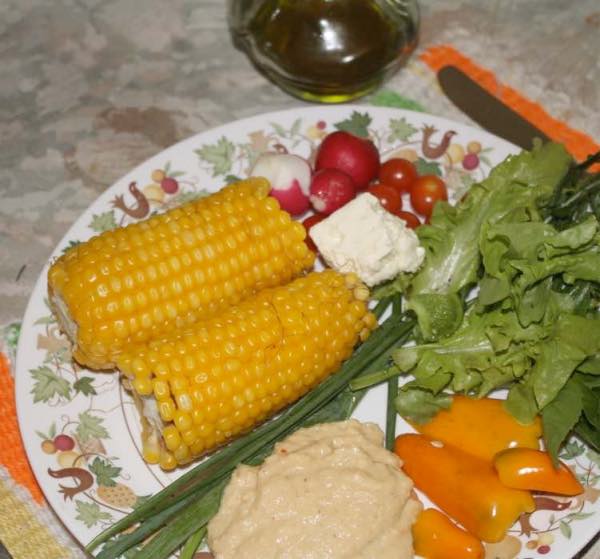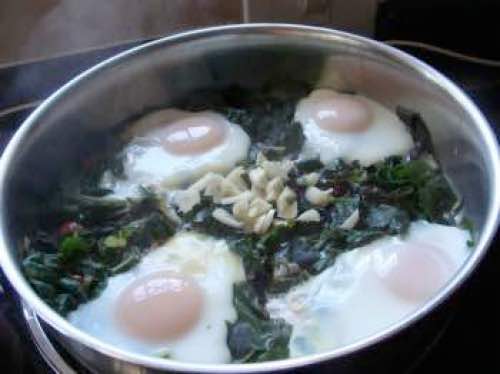- Bernard Preston homepage
- Yellows
- Zeaxanthin Protection Against Macular Degeneration
Zeaxanthin protection against macular degeneration
Zeaxanthin protection against macular degeneration is for each and every person. A deficiency of certain carotenes is the most common cause of age-related blindness after 55; five million Americans and many more are only partially sighted.

Why we choose yellow maize over white
White maize has little or no carotenoid content.
We need to add that scientists remain divided on the topic; but
because of the severity of AMD and the simplicity of increasing these
carotenes in the diet, it makes sense to be on the safe side.
Zeaxanthin works with another carotenoid called lutein; they are isomers with the same chemical structure. Together they are found in very high concentrations in the macula of the eye where fine discrimination and colour are detected.
Studies at the Linus Pauling Institute have shown that a diet rich in carotenes helps prevent cardiovascular disease and some tumours but taken in capsules it has little value; it probably applies in general to most supplements but there appear to be some exceptions.
In short enjoying foods high in zeaxanthin and lutein makes more sense than getting it from a bottle; a lot cheaper too.
Zeaxanthin is not an uncommon carotenoid. It is found in many vegetables and fruit; it gives them their characteristic yellow or reddish colour.
The name is given to this xanthophyll from the botanical name for corn, namely Zea mays.
Hence it is known as "mais" in Dutch and maize in English.
Common foods rich in zeaxanthin
So it is found in yellow corn and citrus; many greens such as spinach, kale and lettuce;. However there is far less in Iceberg. Carrots, broccoli and young beans are also good sources of zeaxanthin.
Carotenoids are better absorbed in the presence of fat, so enjoying your corn with butter and your green salad with olive oil makes good sense.
Folk enjoying a varied diet with many coloured foods need have no worries about zeaxanthin macular degeneration; if you are still on meat and potatoes only then there are serious concerns, particularly if you also smoke.
Zeaxanthin for cataracts
Together with lutein, zeaxanthin macular degeneration is also involved in the prevention of cataracts.
- Zea
- + xanthophyll
- becomes zeaxanthin
Zeaxanthin protection against macular degeneration
Zeaxanthin macular degeneration is all about the prevention of the most common cause of age-related blindness. A deficiency of these carotenoids in the diet leads directly to the use of the white cane; as always, prevention is better than a cure.
Oddly they are only of known importance in the cones of the eye; their concentration in other parts of the body is negligible. Their particular value is in absorbing high energy radiation entering the lens, particularly the blue and UV components that would damage the retina.
These phytochemicals are known as functional foods; they enhance health and help prevent disease. Some of them like the carotenoids lutein and zeaxanthin are well researched in relation to age-onset macular degeneration but there are many thousands and most of their specific roles are quite unknown; that's why those eating plenty of coloured dishes every day enjoy much greater wellness.
Certainly they have antioxidant properties, reducing inflammation and helping to prevent cancer; angry joints, muscles and blood vessels too.
Others like lignans, the isoflavonoids in seeds and whole grains researchers have found give protection against breast cancer for example; legumes too.
It's a colossal subject, fascinating for researchers but for us we simply must make sure we are enjoying a wide range of whole and especially coloured foods.
Ultra-refined foods
The food industry alas refines out most of these phytonutrients, rendering a typical supermarket diet dull and potentially dangerous to health; hence the phenomenal use of chemical flavour enhancers in almost every dish.
It's important to enjoy them in as many different ways as possible. Generally raw foods would have more vitamin C for example; but it is interesting that the lycopene in tomatoes is released in far greater abundance if it is cooked with a small amount of fat.
Allicin is another important phytonutrient found most richly in garlic but the whole onion family in general. So, enjoying leek soup for example is one excellent and tasty way to get sufficient of this functional food.
A wonderful cocktail of these carotenoids is to be had in the Florentine breakfast; lightly fry half an onion, garlic and tomato in butter. Toss on a pile of spinach and other mixed greens like kale; when steamed through, plop a couple eggs on the vegetables. Enjoy on 100% wholemeal, buttered toast.
This delicious meal contains allicin in the onion, lycopene in the tomato and zeaxanthin in the spinach; and omega-3 in the yolks, especially if they come from free range hens. The generous blob of butter promotes the absorption of these phytonutrients, as does the fat in the eggs.
"Cooking by boiling yellow maize at 100° C for 30 minutes increased the carotenoid concentration, while baking for 25 minutes decreased the carotenoid concentrations by almost 70% as compared to the uncooked meal."
- International Journal for Vitamin and Nutrition Research (March 2013)
Carotenoids
Carotenoids are the bright colours in pumpkins, tomatoes and spinach; and beets, for example. They are powerful antioxidants, mopping up the free radicals that damage our DNA; zeaxanthin macular degeneration is just one of many diseases.
Food
Orange peppers
Egg yolks
Yellow corn
Spinach
Kale
Citrus
Lettuce, cos
Parsley, cilantro
zeaxanthin
1.3 mg
1.2
0.8
0.3
0.4
0.1
0.1
0
Zea + lutein
1.5
3.0
1.5
30
26
2
3
Some of these figures are a bit of by guess and by God; different sites have wildly different statistics. Don't consider them absolute but rather as a rough guide. In short, kale, eggs and yellow maize are queens and kings of the eyes. If you enjoy them regularly you need have little fear of age-onset macular degeneration.
Eggs Florentine is a winner.
Eight colors eggs Florentine
Eight colors eggs Florentine
combines many of the sources of lutein and zeaxanthin to give you great
protection against macular degeneration. We have it every morning; toss
in a few broad beans in season and half a tomato to protect the
prostate.
This photo incidentally was taken before we turned to free range cage free eggs; see how pale the yolks are? That means far less carotenes.
Researchers reporting in the British Journal of Ophthalmology report that egg yolks and corn are the richest sources of lutein and zeaxanthin[2]. In general they recommend many coloured fruits and vegetables.

L-dopa and macular degeneration
L-DOPA is a phytochemical produced by certain plants such as the
broad bean; it is used by the brain to synthesize dopamine, a vital
neurotransmitter, a deficiency of which is known to cause Parkinson's
disease. Will it supplement the effect of zeaxanthin in preventing
Macular Degeneration?
Scientists reporting about L-DOPA and Age related Macular Degeneration[1] in the American Journal of Medicine have found that patients taking the drug for Parkinson's disease get AMD a very significant 8 years later than the general population; at 79 instead of 71.
The "retinal pigment epithelium" is a layer that sustains the overlying visual cells.
This membrane has a receptor that responds to L-DOPA, stimulating the growth and nourishment of the rods and cones, the retinal visual cells.
Whilst it is known that the L-DOPA in broad beans will benefit those suffering from Parkinson's disease, it is not illogical to presume that they would also help in the prevention and even treatment of Macular Degeneration. I know of no research confirming this.
We are now recommending the regular consumption of broad beans, along
with dark green leafy vegetables, coloured fruits and vegetables. They
are the best non-meat source of protein in any case after soy; and omega 3 rich
foods too.
When browsing use right click and "Open Link in New Tab" or you may get a bad gateway signal.
Newsletter
Our newsletter is entitled "create a cyan zone" at your home, preserving both yourself and Mother Earth for future generations; and the family too, of course. We promise not to spam you with daily emails promoting various products. You may get an occasional nudge to buy one of my books.
Here are the back issues.
- Lifestyle and ideal body weight
- What are ultra-processed foods?
- Investing in long-term health
- Diseases from plastic exposure
- Intensive lifestyle management for obesity has limited value
- A world largely devoid of Parkinson's Disease
- The impact of friendly bacteria in the tum on the prevention of cancer
- There's a hole in the bucket
- Everyone is talking about weight loss drugs
- Pull the sweet tooth
- If you suffer from heartburn plant a susu
- Refined maize meal and stunting
- Should agriculture and industry get priority for water and electricity?
- Nature is calling
- Mill your own flour
- Bake your own sourdough bread
- Microplastics from our water
- Alternative types of water storage
- Wear your clothes out
- Comfort foods
- Create a bee-friendly environment
- Go to bed slightly hungry
- Keep bees
- Blue zone folk are religious
- Reduce plastic waste
- Family is important
- What can go in compost?
- Grow broad beans for longevity
- Harvest and store sunshine
- Blue zone exercise
- Harvest and store your rainwater
- Create a cyan zone at your home
Did you find this page interesting? How about forwarding it to a friendly book or food junkie? Better still, a social media tick would help.
- Bernard Preston homepage
- Yellows
- Zeaxanthin Protection Against Macular Degeneration
Address:
56 Groenekloof Rd,
Hilton, KZN
South Africa
Website:
https://www.bernard-preston.com